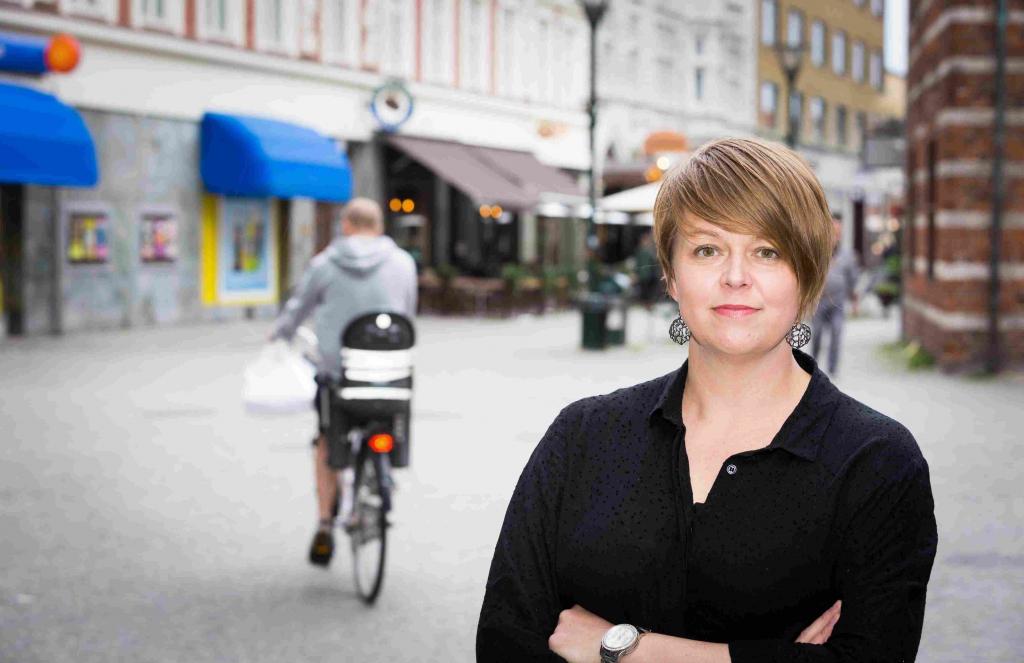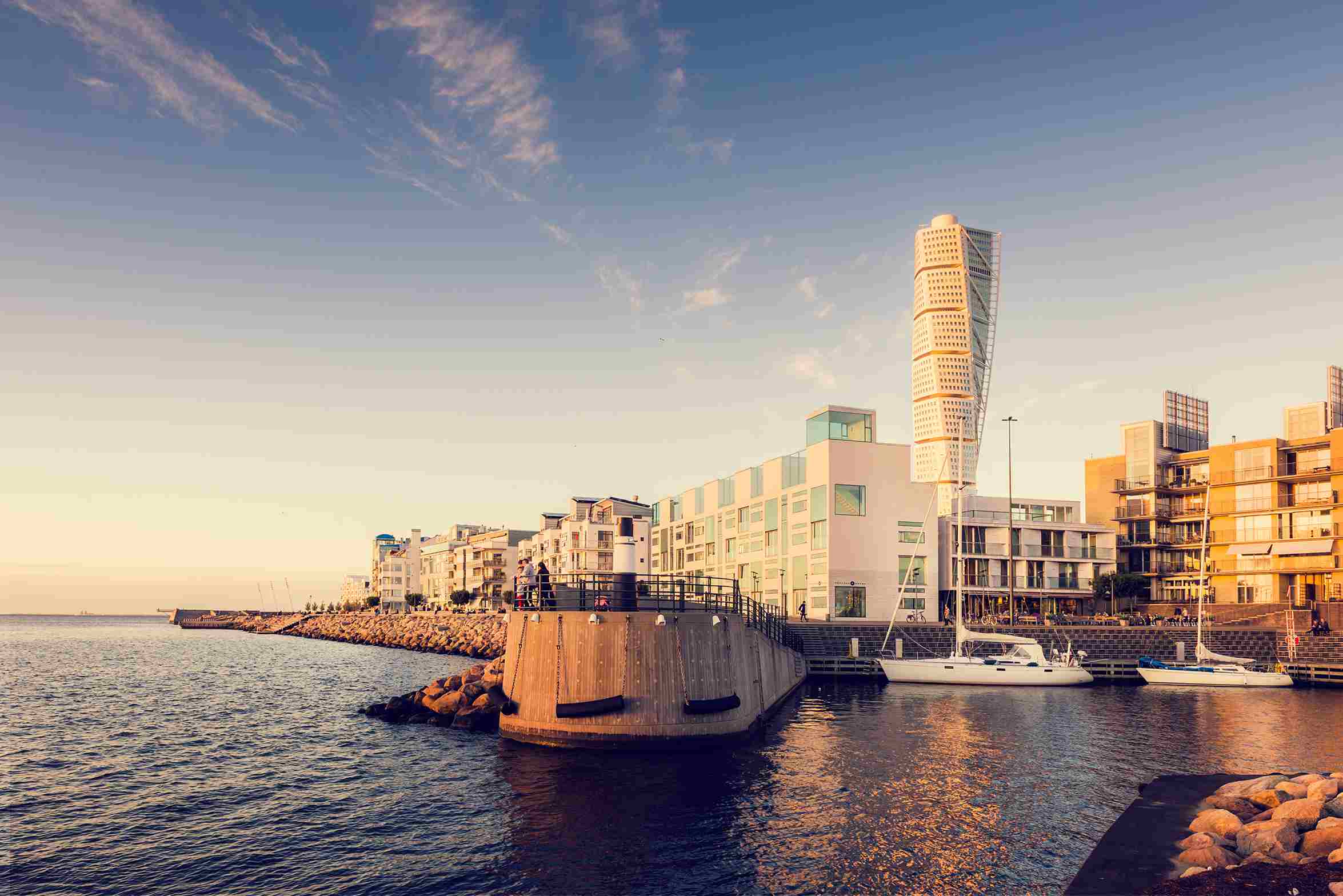Thessaloniki gets ready for its metro launch in November
The underground rapid transit lines have been under construction for almost two decades due to various project delays
 TheMayor.EU logo
TheMayor.EU logo 
Katrin Stjernfeldt Jammeh is proud of the UN recognition of Malmö as a Resilience Hub, Source: Malmö Municipality
A talk with the Mayor of Malmö on the occasion of the city’s UN Resilience Hub status
Fresh from the announcement of Malmö as one of the UN’s MCR2030 Resilience Hubs, we decided to ask the city’s mayor about the significance of this recognition and its impact on the future orientation of the city.
Katrin Stjernfeldt Jammeh (Malmö, 1974) is the first woman to occupy the chairman’s seat of the municipal board of Malmö (the local equivalent of a mayoral position). She took that position on 1 July 2013.
The city of Malmö recognizes the need for cities to collaborate more to address challenges and to share experiences and best practices. When MCR2030 opened for cities to become Resilience Hubs it was natural for us to apply and contribute to the collaboration for cities to become more resilient.
Malmö has a long history of working with sustainable urban development and has been part of the international network ICLEI – Local Governments for Sustainability, which is a core MCR2030 partner. We also have high ambitions and goals, and we can only achieve them by working together.
There are plenty of examples, but one very concrete example that serves as a model for our urban sustainable development is the measures that were taken in the area of Augustenborg, a residential area built in the 1940s and regenerated at the beginning of 2000. By working with trenches, ditches, urban ponds, and green roofs the city was able to drastically reduce the problems with flooding due to cloudbursts.
So, nowadays when we are working with planning new city districts or with the regeneration of other areas, we are looking at ways to plan multifunctional areas that can be used for controlled flooding in certain areas, avoiding overflow in drainage systems and cutting economic losses for the public sector, private sector and for the residents of Malmö.

As a coastal city, Malmö has its unique set of environmental challenges.
Source: Malmö Municipality
This is something we are looking forward to developing together with the other Resilience Hubs as well as with MCR2030 cities and partners. As a coastal city, Malmö has an interest in having a special focus on developing and implementing blue-green solutions.
We have a special focus on the Baltic Sea region. Malmö Resilience Hub will have the potential to connect cities on the Baltic Sea periphery and use the MCR 2030 initiative as a concept for sharing, developing, and implementing actions.
During the ICLEI World Congress Malmö Summit, we have a wide program of sessions and workshops on how Malmö works with sustainability – from energy systems in the sustainable city district of Hyllie, to community building. You can see the program here: Mobile Workshops – ICLEI World Congress 2021-2022.
We do think that many of these could be valid for future sharing activities and perhaps tailored to specific needs and interests. However, we are also highly interested in learning from other cities and regions.
Malmö is currently hosting the ICLEI World Congress Summit from 11 to 13 May.

The underground rapid transit lines have been under construction for almost two decades due to various project delays

Now you can get your wine in Talence by paying directly in Bitcoin

That’s because the state has to spend money on updating the railway infrastructure rather than subsidizing the cost of the popular pass

Rethinking renewable energy sources for the urban landscape

The examples, compiled by Beyond Fossil Fuels, can inform and inspire communities and entrepreneurs that still feel trepidation at the prospect of energy transition

Now you can get your wine in Talence by paying directly in Bitcoin

The 10th European Conference on Sustainable Cities and Towns (ESCT) sets the stage for stronger cooperation between the EU, national and local level to fast track Europe's transition to climate neutrality.

At least, that’s the promise made by the mayor of Paris, Anne Hidalgo

The underground rapid transit lines have been under construction for almost two decades due to various project delays

At least, that’s the promise made by the mayor of Paris, Anne Hidalgo

Hostal de Pinós is located in the geographical centre of the autonomous region

Despite its church-y name, the district has long been known as the hangout spot for the artsy crowds

Urban dwellers across the EU are having a say in making their surroundings friendlier to people and the environment.

Forests in the EU can help green the European construction industry and bolster a continent-wide push for architectural improvements.

Apply by 10 November and do your part for the transformation of European public spaces

An interview with the Mayor of a Polish city that seeks to reinvent itself

An interview with the newly elected ICLEI President and Mayor of Malmö

A conversation with the Mayor of Lisbon about the spirit and dimensions of innovation present in the Portuguese capital














